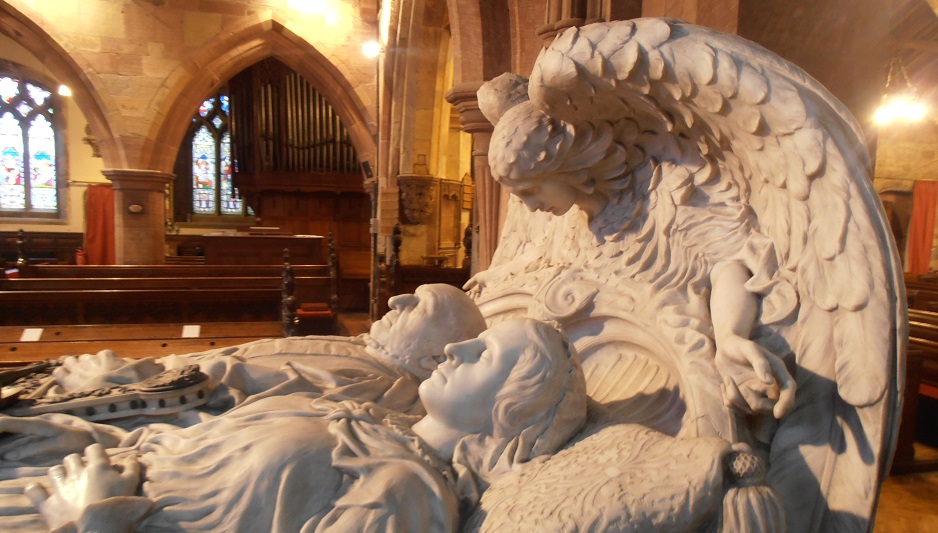How important is the relationship between art and religious belief? At the beginning of April 2016 we welcome Debbie Lewer of the University of Glasgow to the Library to deliver a fascinating course on the connections between the two. Attendees will gather in our beautiful Library to pore over a diverse range of media and learn how art reflects, responds to, is shaped by - and even shapes – belief. Debbie is an art historian who lectures on topics across the field, including on wider media such as photography and architecture. As we edge closer to April, we spoke to the her to find out a little more about her ideas, her work and what we can expect from Ways of Seeing: Art and Faith.
Your course is about the relationship between Christian faith and art. Have the two always been interlinked?
Art is older than the Christian faith, of course. But human beings have always used visual images of one kind or another – figurative, abstract or symbolic, in private and in public – to articulate their individual and collective responses to the divine.
Why are they important to one another?
For so many reasons – because people have always argued, sometimes violently, about the nature and place of images in Christian life; because of the pivotal place of the visual and visionary in the Bible; because whether we have any religious belief or none we are surrounded by images, objects and artworks relating to the Christian faith (as well as to other faith traditions and indeed to other fields of life). I’m fascinated by how works of art themselves can play a part in articulating, challenging, affirming, offending, deepening, revolutionising and even awakening belief.
Does the relationship involve any degree of compromise?
Yes, almost always, but that’s what makes it so interesting. So much of human experience and interest is involved – not least in money, power, status, identity, sex, gender relations, psychology, politics, taste, morality, and more. All have played their part in the complex relationship between art and faith. The results can be weird or wonderful or anything in between.
How far does the term ‘art’ extend?
About as far as you want it to! In my field we have been arguing for some time about terms such as ‘visual culture’ and ‘material culture’, which may (or may not) help us move beyond narrower concepts of ‘art’. On this course you’re as likely to find yourself looking at a great painting from the Renaissance or a church interior as you are at a photograph, some challenging contemporary art or at the odder end of ‘Christian’ kitsch...
Art from (for example) the Middle Ages and the Renaissance have very obvious religious subjects. Are art and faith as interlinked today?
It depends on the context. The relationship has been under strain, certainly, not least since the Reformation. One paradox today is that it is perfectly possible to find and experience a more vital relationship between art and faith in a ‘secular’ place like a museum than in a church.
Is the relationship any more or less difficult in the modern age?
It depends for whom. For artists? For the church? For believers? Non-believers? It is certainly different. Above all, changes in patronage have meant enormous changes in the nature and function of art. The field of contemporary art is especially intriguing today. Here we encounter both fear of and fascination with faith, with some interesting results…
What are your particular areas of interest?
My job title states that this is ‘Modern European Art’, but that doesn’t tell you much! The majority of my academic research and graduate teaching is on German art, especially of the 20th century. But I lecture on many other areas of art history from the Middle Ages to the present and across wider media such as photography and architecture. As someone who has become a Christian during the time that I have also become a professional art historian I have a special interest in theology and the arts. Personally speaking, I could not separate the two - art and faith - even if I wanted to.
There is, of course, the Burne-Jones window in neighbouring St. Deiniol’s Church – will you be venturing over?
We might well do that, good idea!
Debbie Lewer is Senior Lecturer in History of Art at the University of Glasgow. Her course at Gladstone’s Library, Ways of Seeing: Art and Faith takes place across from Friday1st - Sunday 3rd April. This is a weekend-long course which begins with introductions at 6pm on Friday evening, and continues until after lunch on Sunday. Find the full course schedule, including Saturday night’s screening of the film Museum Hours, here, and more information about the course here.
Residential prices start from £192, non-residential from £150. Discount rates for clergy and students apply. To book, please call 01244 532350 or email [email protected].
Kirsten-Rose Brooks, Library Intern

